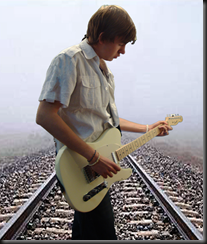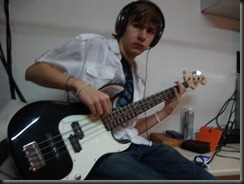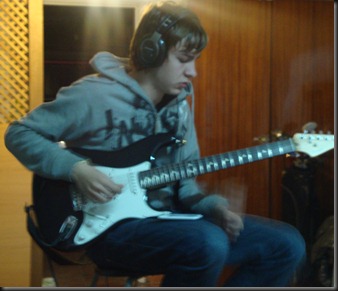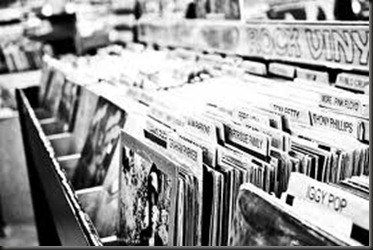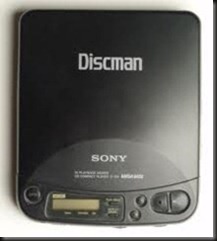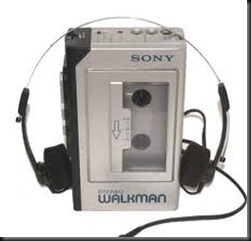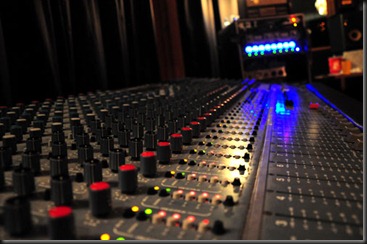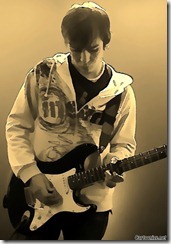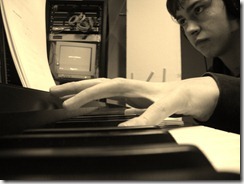http://jambooat.blogspot.com.es/2012/03/business-in-music-part-1-of-2.html
Progress on all activities arround Slice his music and projects. The passion for music and taking the challenge. Come with us on this magical trip.
Monday 26 March 2012
Business in Music part 2 of 2
http://jambooat.blogspot.com.es/2012/03/business-in-music-part-1-of-2.html
Saturday 10 March 2012
Business in Music part 1 of 2
This article was intended for a different platform and was written some time ago. I still see the things as I express in the following word, but there are some new considerations I have added in the time I did the first draft to this final. I will try to put in some closing notes to clarify myself. Otherwise I will leave the post in the original words.
Having a 16 year old son that wants to find his way in the music industry has made give many things in this world a great deal of thought. Once upon a time I also dream on becoming a musician, and make a living with my money. Since it was a dream I dreamt about making lots of money, fame and becoming a rock star. Truth is that things have changed a bit since those days, not just simple changes on genre or music styles, there is more competence, the market is different, the business is different, and basically nothing is the same.
In the 80s and 90s we consumed much less music than we do now, but we purchased more than now, not only in the amount of records but the budget that we had then for buying music was bigger than todays. So! ¿what has happened? The simple answer to this is that we have changed the way in which we consume music. The thing is that thou the consumers have moved their way of listening and interacting with music, the industry has tried with no result to remain in the same corner as 20 years ago. In the era of the vinyl records we would purchase 2 or 3 singles as they were released and finally the album that ended up including them. Technology moved along to the cassette tapes and singles where not that prominent but we still purchased the cassette. When the CD Rom appeared we all moved along, I have some albums in all 3 formats. We can now listen to music on an ever-growing array of devices, this has brought with it a liberation of where, we listen, how we listen and when we listen to music. The evolution of technology has introduce hole new culture of music consumption, we no longer have to be static net to the record player or limited in our mobility by Walkman’s or Discman's we all know where we can engage with music and with what ease. Music is not just hobby it has become the background sound track to our everyday activity. To the extent that younger generations take it for granted that music is present 24/7. What this new scenario were music is universal due to the unlimited access provided by the new and wider available technology platforms available, has provoked is that the old ways we obtained the music has become obsolete.
However the market or better said the industry has not been as fast at evolving. If we review the way vinyl records were sold and how CDs or DVDs are sold today there is no substantial change. The chain top to bottom has maintained its original form and players, maybe some minor changes have been introduced to improve processes but the core is the same. The major driver is that the stake holders have the same interest and roles and these are anchored to the past, this immobility of these historically accepted archetypes, is a net that has too much to lose. By looking at how has what to lose we can easily point out what is wrong in the current business model and the whole industry.
The Label or record company have been and still are a necessary stake holder. But their role needs to be reconsidered. They were the music Maecenas, to record an album or a song and to commercialize it was a very expensive venture, they would put the money up front to accomplish the project, you could say that they are like venture capitalist that invest in a musical project, the main difference being that the investment is the first to be deducted from any income from sales, plus they normally take the biggest chunk from the profits. The distribution chain is an endless stream of middle player whose only mission is to take the product from point A to point B being point B the commercial outlets something that is in great disuse now a days, places were consumers can pick-up physical copies in CD ore DVD, where big department stores sell the majority, leavening small and specialized musical stores out of business.
I will continue next week with part two of this article.
Please support Slice at http://youtube.com/user/inside71slice
Thanks for reading
Ian Burt © 2012
Saturday 3 March 2012
Slice “The Wall”
The STW project I have been talking about for the last months get’s its name from “The Wall”, an all time master piece album by the Pink Floyd. STW are the initials to Slice “The Wall”: Slice came up with the idea and is the only performing artist. We have been holding back disclosing this for a number of months, waiting to get some go-ahead's, we have decided to come out into the light, Why? well, why not?
The best way to answer is to explain what the project is about. Rock history knows that Pink Floyd released the album “THE WALL” one 30th of November of 1979, the album released as a concept album, where the motive and story behind main theme is well known. There is plenty of information on the internet and dozens of books, so going into it would be presumptuous on my part, others better versed than I have already provided extended and deeper knowledge, so how could I dare. Also common public awareness is the fact that “The wall” over the years has been represented through different platforms, as a live show, as a movie, etc. This brings us to Slice, During the “Roger Waters The Wall” tour through Europe, Slice and I had a chance to see the live performance in Madrid, both Slice and myself are great fans of Pink Floyd, in such a way that Slice has done a few covers for his YouTube channel in the past, of some of the most memorable songs of the band. After the show Slice came up with the idea of doing a cover of the entire album, all 26 songs. I thought that was a great challenge for him he was only 15 at the time, but at the same time the idea was new and surely rewarding if it was done right.
It took us 2 months to decide how we wanted accomplish the different tasks, the schedule, the method, as many bits and pieces as we could. We ended up with a huge list of thing, not big enough to put us off on our desire to embrace this project with all our strength.
Before I go into any more detail there are a few things that I need to clarify to avoid misunderstandings:
- The entire project is a non-profit quest, all Slice and I get out of this, is the cover and recreation of a master piece we both worship and admire, with the personal satisfaction that this brings with it.
- We will not publish this work to the public without the approval of the legitimate owners of the Copy Rights. (Roger Waters, David Gilmour and EMI Group Limited)
- The Cover will be published when permissions granted on YouTube on Slice’s Channel and will not be under the name STW or Slice The Wall these are code names during the project development stage, are not registered and hold no commercial value.
Having that out of the way, for what I am happy. Contact has been established with David Gilmour’s managers office in London and they have no objection to the project as long as the IP is not damaged or mistreated. We have sent the same request to Roger Waters office but haven’t received reply yet (witch is understandable being that he is in middle of a tour right now). We have been unable to contact EMI, there seems to be a logical barrier that we have not been able to overcome yet. We have left a few attempts via their web site but we have no idea if they have gone through.
Getting on with the project, Slice is going to record all guitars (Electric, Acoustic, Classic & Slide), Bass for all tracks and Piano on all tracks that have piano (not keyboards). in the 26 songs there are over 90 different parts, and some are going to be dubbed. that means nearly 150 tracks to be recorded. we started in August and have recorded 21 session with 87 tracks finished in total, where in most sessions Slice records between 6 and 8 parts, we have had to repeat some early recordings due to sound issues. Our target is to finish all the recording by April and have the mixing finished by July. There is still a fair way to go but we are more confident after every session.
Rough mix not the final thing.
After July and once the audio is all finished, mixed and mastered We will start editing recording and editing the core live performance video, All the video will be treated using the Chroma Key technique. There will be tons of footage we are using up to 6 cameras on every instrument part that sums up to 80x6 in the range of 500 video clips, that need to be selected arranged and edited. One of the things we decided early on, was that expecting to engage our potential viewers for an hour and a half on just a performance of slice would not cut it, we wanted to do something more without making a plagiarism of the film or show. keeping the viewers attention has been and still is a challenge that we haven’t quite solved. One thing that we are going to do is record a side story with Slice as the main character, where he tries to go through the different songs with a personal view, this has not yet taken since we are still working on the script and footage that needs to be decided. A great amount of this resource footage that will be recorded outside the studio, there for we are waiting for better weather.
There is also the Graphics, all Chroma video will be scored upon a virtual background that is being designed for all different scenes.
Please review earlier posts to get further details on the STW project.
I will continue to post on the progress of the project as we move down the schedule.
any enquiry or support please contact me at iaburt@hotmail.com
Support Slice by visiting his You Tube Channel at http://youtube.com/user/inside71slice
Thanks for reading, I hope you enjoyed.
Ian Burt © 2012
